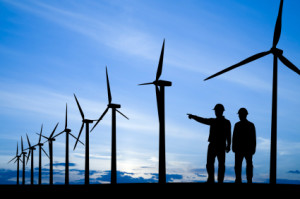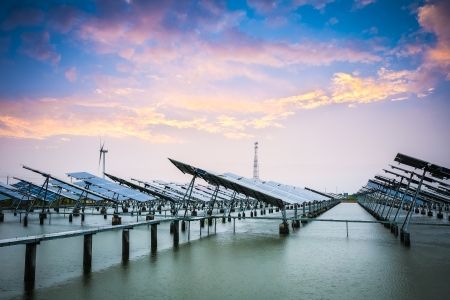Criteria
Project Finance Criteria
 Most mainstream Renewables Investors (often focused on renewable energy, food, water, or materials) and climate-smart, net zero, sustainability-related or “impact” investors look for …
Most mainstream Renewables Investors (often focused on renewable energy, food, water, or materials) and climate-smart, net zero, sustainability-related or “impact” investors look for …
- Proven technologies, or at least commercially provable technologies, ideally with a track record of many years of commercial use in similar locales and at the scale intended by the project developers/sponsors. Not all investors require this, but minimal technology risk (or mitigants like performance bonds) and close to zero commercial/business risk are considered the gold standard of project finance. Because of this, industries are typically limited to wind or solar power (photovoltaic, concentrated PV, or solar thermal, with or without storage), hydroelectric, geothermal (if the inherent finding risk is somehow addressed), some waste conversion technologies (such as biogas co-generation of electricity, or certain gasification/pyrolysis, etc.), wave or tidal power solutions already in commercial use, plus sustainable aviation fuels, biofuels, efficiency, green hydrogen and storage.
- Unlevered Internal Rate of Return (IRR) in the mid-teens or above. Some family offices and conservative investors using innovative structures are willing to accept IRRs as low as 4 or 4.5%. Ask us if this is you.
- Equity contribution of capital (unexpended cash) alongside a pledge of collateral for a senior loan. NEWS FLASH for 2023! 100% debt is now available from reputable sources. Those that claim to provide all debt usually offer either short-term bridge or construction loans or onerous terms that give them too much control. That has changed once again in the current (late 2023) market, as some PE/VC investors seek “safe harbor” during inflationary times, or wish to ride out general market uncertainty in the (hopefully) aftermath of the Covid-19 pandemic. Most of these US-based lenders do expect some sort of down payment or security deposit to get through due diligence. Explore affiliate In3 Capital partners funding options or apply
- Reasonably low (as close to zero as possible) commercial risk (secured site, inputs and either long-term agreements from creditworthy offtakers or reliable merchant rates or “nodal” pricing for power offtake) to ensure investors will realize returns; EPC firm or general contractor performance guarantees or other insurance wraps further lower operational risks.
- Proven management teams with demonstrated experience and many years of solid execution track record.
- Shovel-ready status or a willingness to offer equity (carried interest) for covering costs prior to construction.
Don’t happen to meet all these conditions? Affiliate In3 Capital Partners may be able to help with its flagship mid-market project finance program in more than 30 qualified sectors:
NOTE : If you seek venture capital for an early-stage technology commercialization company, you are in the wrong place. STOP HERE and consider alternative finance approaches such as via RIF affiliate In3 Group for an initial consultation toward development or fundraising assistance.
: If you seek venture capital for an early-stage technology commercialization company, you are in the wrong place. STOP HERE and consider alternative finance approaches such as via RIF affiliate In3 Group for an initial consultation toward development or fundraising assistance.
Project innovations come from either choice of geographic location, business/revenue model, or other unique approaches. Commercial, institutional and most private lenders will not take risks the way some equity investors will, and most project financiers are highly averse to technology risk altogether. Not so for In3 Capital Partners.
As of 2021, a surge of renewables that were previously shunned (water-related, waste-to-value such as resource recovery, biomaterials, climate-smart agriculture, sustainable food systems, and many more) now receive due consideration if the remaining criteria, shown below, are reasonably strong.
-
-
Experienced, reputable project sponsors and management teams — minimum 3-5 years industry experience.
-
Credit-worthiness: An asset base, balance sheet, and credit history (such as reported by D&B using a company’s DUNS number) for developers, or through involved sponsors, stakeholders (counterparties), or guarantors.
-
Reasonable financial returns to equity investors, given the opportunity, current economy, and history.
Equity investors usually consider unlevered IRRs of 12-20% or more as “reasonable” but this varies widely by industry and scale. Lenders are most interested in adequate cash flow and debt service ratios. In addition to financial returns, impact investors also factor in social and environmental benefits. Carbon offset, improved working conditions, advantages due to energy efficiency, or other impacts must be included, measured and realized.
In addition to financial returns, impact investors also factor in social and environmental benefits. Carbon offset, improved working conditions, advantages due to energy efficiency, or other impacts must be included, measured and realized. -
Risk mitigation: A thorough and intelligent risk analysis with mitigants for key risk factors, including equipment security, volumetric (production) risk, political risk (see In3 explanation), operating risk or other factors must be considered and managed.
-
It must make sense, especially in terms of cash flow. Sufficient upside to easily afford debt service. This is usually evident through carefully structured and detailed financial plans for the life of the contemplated loan or payback period for equity investors (ideally, modeling would encompass the life of the project). Depending on power purchase arrangements, project sponsors must allow for likely changes in energy prices, full equipment maintenance, amortization and labor (operating) costs. In some cases, feedstock security, such as with biomass or waste conversion, is essential.
-
Contact us for more information.
Other resources: Renewable Energy investors may want to download and read our original Renewable Energy-related project finance whitepaper for further background and assumptions.
